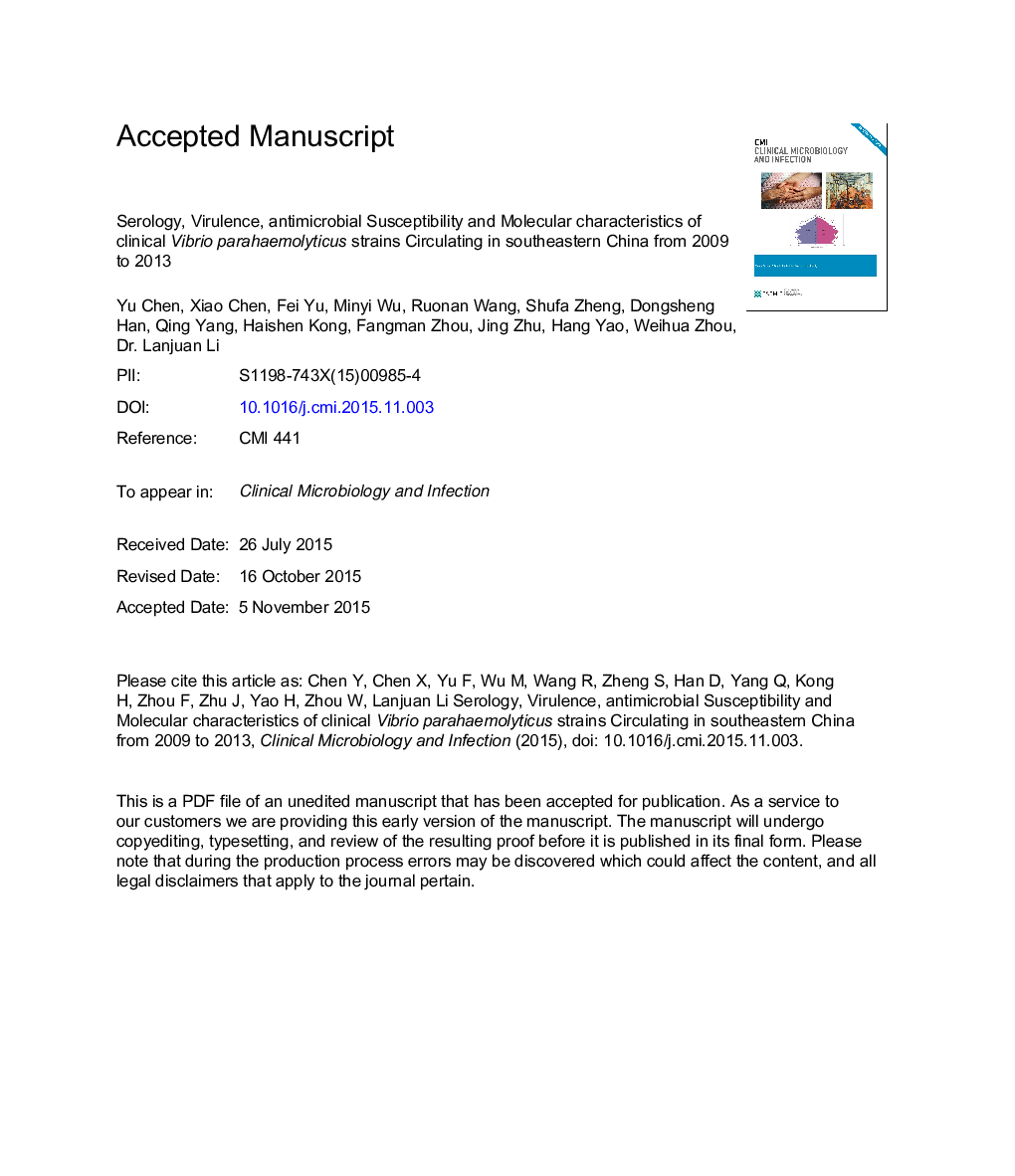| Article ID | Journal | Published Year | Pages | File Type |
|---|---|---|---|---|
| 6128971 | Clinical Microbiology and Infection | 2016 | 26 Pages |
Abstract
Vibrio parahaemolyticus is a leading cause of food-borne diarrhoea in coastal countries. Although V. parahaemolyticus cases have been reported since 1950, they have been poorly documented. From July 2009 to June 2013, we collected 6951 faecal specimens for pathogen detection; V. parahaemolyticus strains were isolated from 563 specimens (8.1%). We then analysed the characteristics of the 501 V. parahaemolyticus strains that were isolated as the sole pathogen. Twenty-one serotypes were identified among these strains; O3:K6 was the most common serotype (65.1%), followed by O4:K8, O4:K68 and O1:K36. One strain of the O4:K18 serotype was isolated from clinical patients for the first time. Pandemic O3:K6 clones were predominant and accounted for 69.1% of all of the pandemic strains. This is the first report of one strain expressing the O3:K8 serotype with a pandemic genotype. The presence of the haemolysin gene tdh (93.0%) was the key characteristic of the virulent strains; however, a few strains carried the trh gene. We also confirmed the presence of the type III secretion system 2 (T3SS2) genes in all of the pathogenic strains. Subsequent multilocus sequence typing split the isolates into 16 sequence types (STs), with ST3 and ST88 as the most prevalent in southeastern China. Most isolates were sensitive to common antimicrobial agents, apart from ampicillin. However, the resistance rate to ampicillin has apparently increased in this area. In conclusion, our results indicate that pandemic O3:K6 V. parahaemolyticus isolates are predominant in southeastern China, and additional surveillance should be conducted to facilitate control of the transmission of this pathogen.
Keywords
Related Topics
Life Sciences
Immunology and Microbiology
Microbiology
Authors
Y. Chen, X. Chen, F. Yu, M. Wu, R. Wang, S. Zheng, D. Han, Q. Yang, H. Kong, F. Zhou, J. Zhu, H. Yao, W. Zhou, L. Li,
